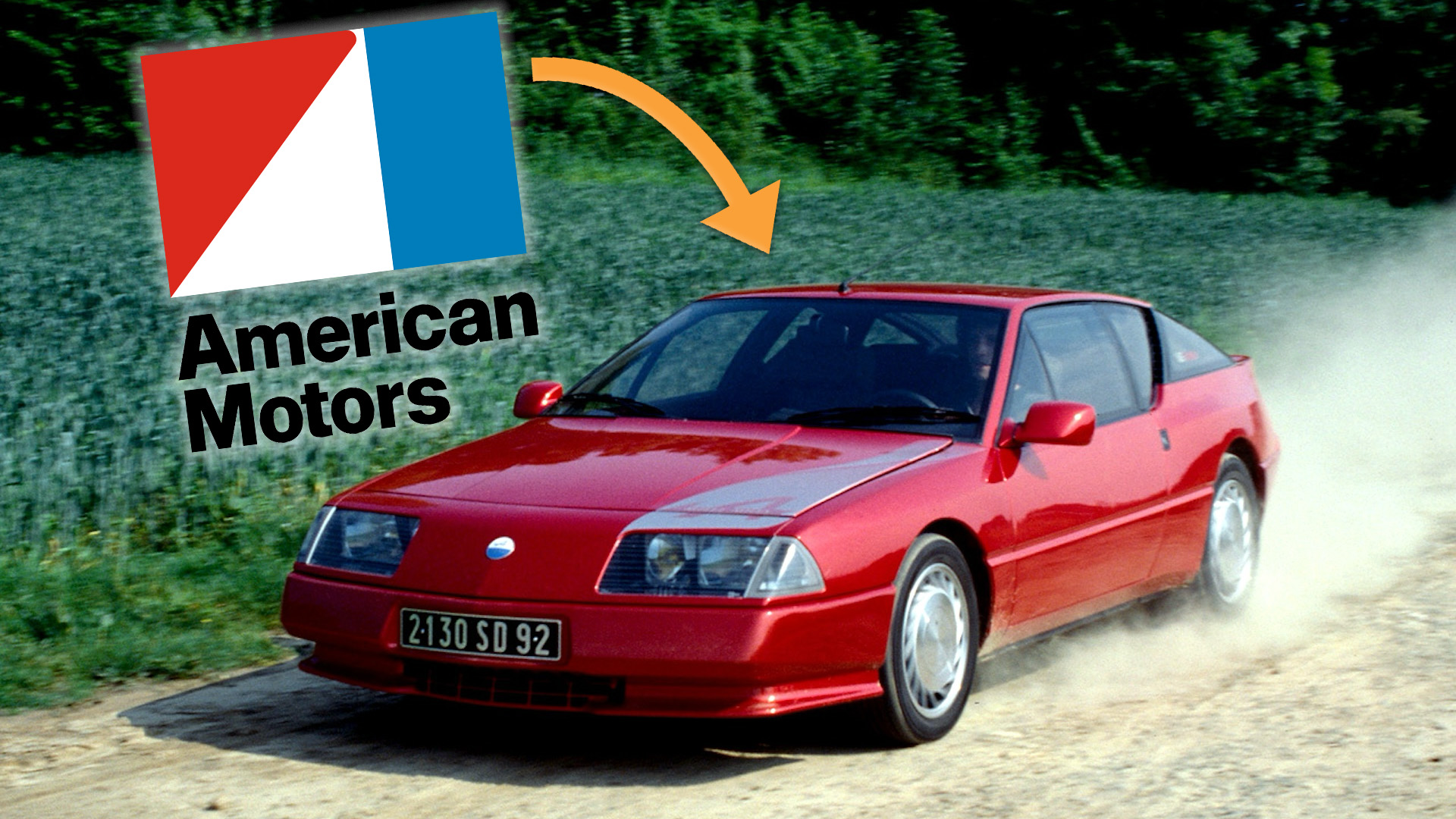

The death of America’s not-so-big fourth automaker, AMC, is an oft-forgotten turning turning point for the U.S. car industry. Among other things, it handed Jeep to Chrysler, which wouldn’t be where it is today without the Cherokee and Wrangler. But for everything we car fans gain, we forfeit something in return, and what we lost would’ve been one of AMC’s coolest performance cars ever—a rebadged Renault Alpine GTA Turbo called the AMC GTA USA. [Eagle screeching in distance]
The origins of what was almost AMC’s last hurrah began in March 1984 according to Losange Magazine, or several months before the Renault Alpine GTA’s launch. This successor to the A310 was a two-plus-two coupe with a rear-mounted 2.5-liter, single-turbo PRV V6 related to the one in the DeLorean. It sent 200 horsepower and 210 pound-feet of torque through a five-speed manual to the rear wheels, which hauled the 2,601-lb coupe along handily. It achieved zero-to-60 mph in about seven seconds, and could reach 155 mph. Those may not sound like much today, but they were roughly on par with the C4 Chevy Corvette at the time. That might’ve been why Renault was so keen on exporting it to the United States.

Renault, which was a major shareholder in AMC at the time, wanted to use AMC’s dealer network to distribute a line of badge-engineered Renaults as premium products. It led the charge with the Eagle Medallion and AMC Premier sedans, which were to pave the way for the Renault Alpine GTA as a halo car. Of course, it had to be federalized before that could happen, and it’d benefit from a more starry-and-stripey name. They landed on the ultra-patriotic AMC GTA USA—presumably after a mishap with some alphabet soup.
The Americanized GTA USA got much more than the oversized bumpers common to imported European cars of the era. Its chassis differed significantly, with a stamped steel front subframe instead of the Euro model’s tubular one, and reinforced doors for better side-impact resistance. Some interior amenities were tweaked, the headlights were swapped for flip-up units, emissions equipment was added (sapping 20 hp), and the suspension was retuned accordingly. All these added significant weight, which reportedly swelled to 2,921 lbs. Their distribution supposedly improved though, from 37-63 according to Car Magazine to about 40-60.

Renault aimed to have the car ready for showrooms by March 1987, and even had AMC publish ads hyping the sleek new sports car in the mid-’80s. By December 1986, Renault had built 21 pre-production cars, setting the stage for a planned 500-unit run for 1987. But Renault itself wasn’t in good shape either at this time, in part due to investment in the troubled AMC and a cutting-edge new factory in Canada (that’d eventually make the Dodge Challenger). Despite pressure to split with AMC, Renault’s new chairman Georges Besse favored sticking it out, especially as Jeep gained steam from its newly introduced XJ Cherokee and YJ Wrangler.
But Besse’s influence was cut short on November 11, 1986, when he was assassinated by a French militant group. The impetus for Renault to remain allied with AMC diminished, and in March 1987—the very month the AMC GTA USA was meant to go on sale—Renault sold its stake to Chrysler. Alpine reportedly held out hope of striking a distribution deal with Chrysler, and invested in expanding production capacity in preparation. But no such deal was made, and the closest the GTA USA came to fruition was having some of its design elements repurposed in the Alpine A610.

As for those 21 pre-production would-be AMCs, most of the cars reportedly still exist. Two are apparently preserved at the factory, with the rest being finished as Alpines and scattered around Europe… With one exception. In December 2000, one of the cars was imported to the United States, finally completing the journey it was built for. It’s now a symbol of an alternate automotive timeline, one where AMC might have survived, thrived even, and gone on to grapple with a weaker Jeep-less Chrysler for its place in the Big Three.
Such a scenario takes the mind to strange places, from AMC versions of the A610 to the Twingo, Espace, and Clio V6. Or while we’re at it, an AMC Sport Spider, or an AMC link to Renault’s Formula 1 triumphs of the 2000s. Alas, these are fantasies, cursed creations of the mind. But let it not be said that our own timeline didn’t produce its share of those too—they just didn’t wear AMC badges.
Got a tip or question for the author? You can reach them here: james@thedrive.com